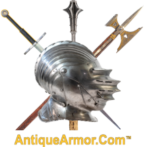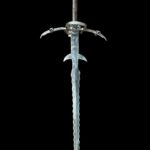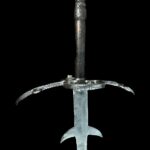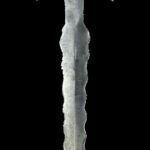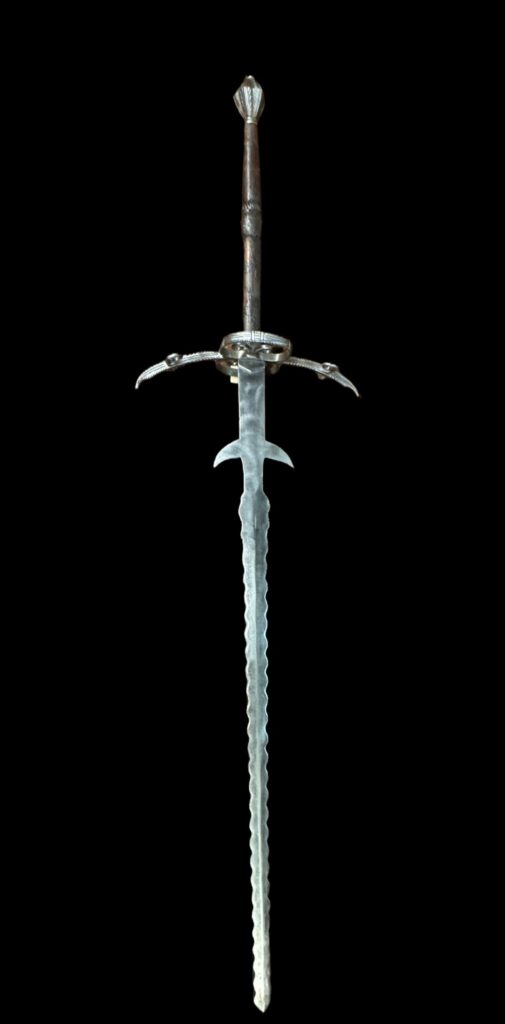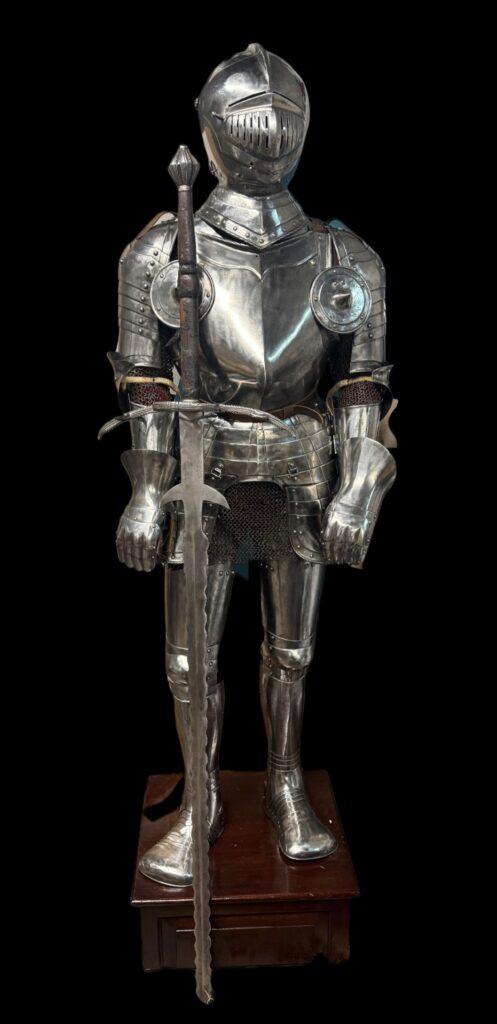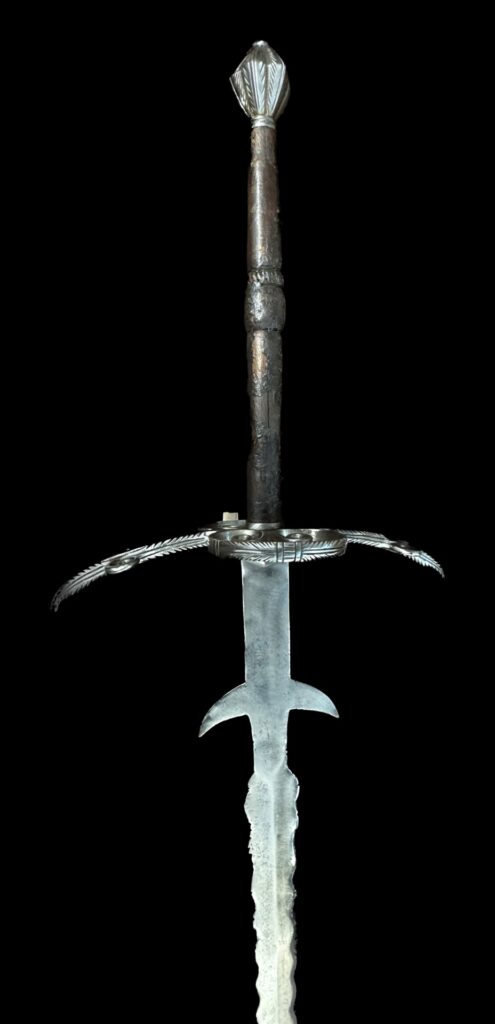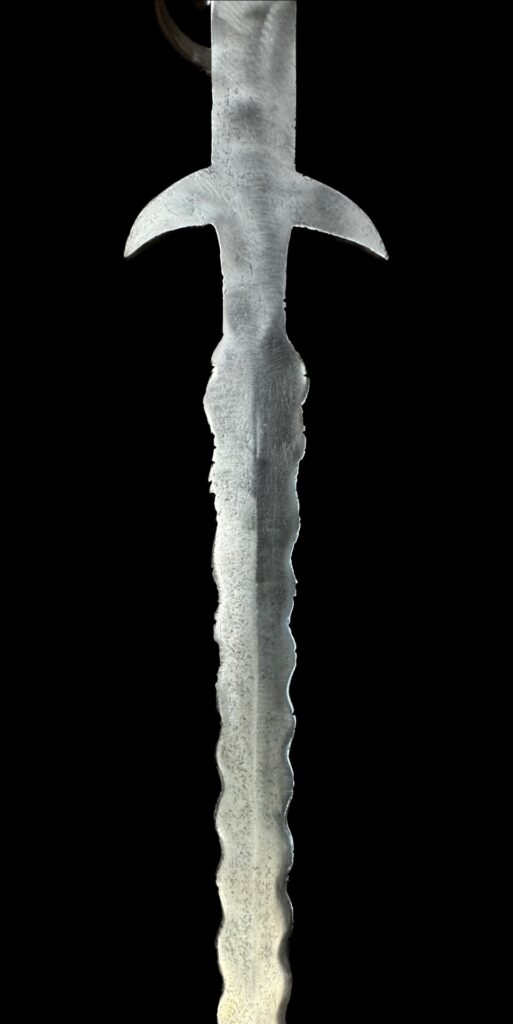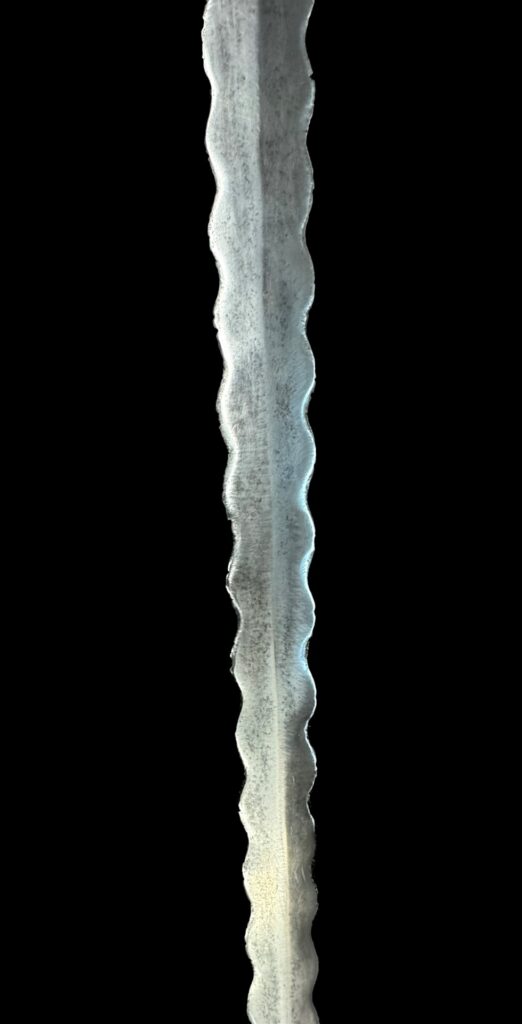DISCUSSION: Ceremonial/Parade/Bearing swords were primarily intended for religious, court, parades, and other social functions. Swords of this type tend to be very ornate, expensive, and very large. These swords were created to look very pretty and were not utilitarian weapons. They were usually not intended for fighting, although some fighting swords were later repurposed (modified) to become ceremonial swords after their working life. The special undulating flamberg blade is named after its flame shape. The flamberg blade was used primarily with Zweihander (two-hand swords). Flamberg is the name attributed to the sword, a fictional French knight introduced in a 12th-century narrative poem (chanson de geste) named Renaud de Montauban. From the 1600s to the 1700s, the term flamberg was used to describe special dueling swords. During the Victorian period, the term was erroneously applied to wavy-bladed swords.
There are three primary types of flamberg blades. The flamberg has an undulating design for five primary reasons:
1) The design creates a gripping crevice at the bottom where the scallops meet, offering the following advantages: (A) trapping and redirecting the opponent‚ blade (sword) to a more advantageous position for a counterattack, (B) making it easier to dislodge the opponent‚ grip from his sword.
2) It was believed the flamberg blade could cut deeper (especially on certain types of soft armor like cuir-bouilli, mail, or fabric) because the full impact of the sword was concentrated exclusively on the high ridges of the scallop. The smaller surface area results in deeper penetration if the sword is swung with the same power.
3) A sawing-ripping motion is possible after penetrating the impacted area, resulting in a deeper cut.
4) The flamberg is an elegant blade that could also have been adopted by civic, parade, and/or ceremonial guards.
5) The sword was lighter and easier to handle because it required less steel to make.
So why did it take until the early 1300s for the bastard sword to flourish? There are two primary reasons:
A) For the same reason, full-metal defensive armor and two-hand swords did not develop until the same period. As furnaces got bigger in Medieval Europe, steel billets (solid lengths of steel) accordingly increased in size. With bigger steel billets, swords could now be made with fewer (but larger) steel billets, eventually reaching their peak of one billet per sword. Larger furnaces generally meant higher temperatures, better steel, faster production, and probably less expensive to manufacture on a large scale.
B) As armor evolved, its counterpart, the sword, did the same, with larger specialized swords of superior quality and design. This was the weapons race of its day.
A two-hand sword, by definition, is a sword designed to be used with two hands for maximum effectiveness. Styles of swords can vary by nationality. Two-hand swords were widespread both in the field and in the lists from the mid-15th to the early 17th centuries, though from the latter part of the 16th century, they tended increasingly to be employed in a ceremonial role. It has been suggested that the earliest references to the use of the two-hand sword are those to be found in a French copy of the Romance of Alexander of about 1180, which mentions a “bone espée a II espieus molus,” and in the chronicle of Guillaume Guiart, written in the period 1304-7, which notes that the French, when fighting the Germans in 1264, had to adjust their tactics “Car les deux mains en haute levées/ Giètent d’unes longues espées.” More certain evidence of the use of the two-hand sword is provided by Jean Froissart (1337–1410), who, when writing his chronicles of the year 1358, noted that the Canon de Robesart “tenoit une espée a II mains, dont il donnoit les horions si grands que nul les osoit attendre,” while Bertrand du Guesclin (circa 1320- 1380) recorded in his chronicle that Oliver de Manny carried “d’une espée a II mains” (J. Hewitt, Ancient Armour, and Weapons, Vol. II, London, 1855, p. 256)..
Length: total length is 68.5 inches..
Conclusion: This is an exquisite sword who’s original grip has suffered a bit. All collections should have an iconic two-hand sword as a centerpiece. This example is attractive not only for its great size but also because it has a flamberg blade. It’s an amazing piece for any collection. Owner says sell at under $6K!!!*
